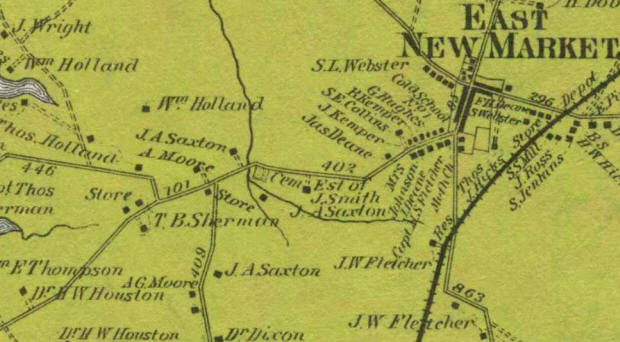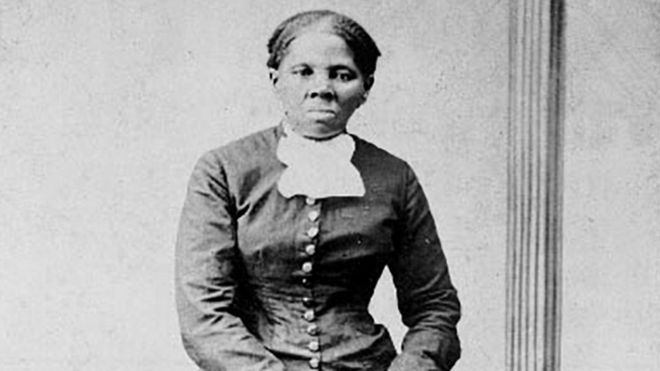By day, he was a pastor of a church but by night, he was part of a secret network that helped slaves escape to freedom.
The Reverend Samuel Green, a farmer and a Methodist preacher, was also a key Underground Railroad agent active in Dorchester County, Maryland in the 1850s.
In the course of time, he met with other prominent black abolitionists like Frederick Douglass, Stephen Myers, John Rock, among others.
Harriet Tubman even mentioned that she occasionally stayed at Green’s home during her rescue missions.
But it is not his so-called collaborations with Tubman and other fugitive slaves that would land him in jail but rather his possession of a copy of a best-selling book – Harriet Beecher Stowe’s Uncle Tom’s Cabin that was anti-slavery.
Despite being born into slavery in New East Market, Maryland around 1802, Green received an education, unlike many black people during that period.
He initially worked as a farm slave in the fields of Dorchester County and married an enslaved woman called Kitty who gave him two children.
In 1831 when Green’s owner died, he bequeathed his freedom five years later but Green was able to earn enough money to pay off his freedom after just a year.
He also paid off his wife’s freedom, nevertheless, their two children remained slaves. In 1854, one of Green’s sons, Samuel Jr., was able to escape the home of his owner, Dr. James Muse to Canada.
Fearing that Samuel’s sister would do the same, Muse sold her to a plantation owner in Missouri, separating her from her husband and two children.
Meanwhile, Green had gained prominence among the freed black community while working as a lay minister in the local Methodist Episcopal church.
In 1852, he was selected as a representative to a statewide “Convention of the Free Colored People of Maryland.” Three years after, he attended the National Convention of the Colored People of the United States in Philadelphia where he met the likes of Douglass and other leading black abolitionists at the time.
But most importantly, Green was a key member of the Underground Railroad, a large movement in North America consisting of several individuals who worked together to aid slaves in their escape from their captors.

Accounts state that a lot of fugitive slaves passed through Green’s East New Market home during their daring escapes.
It is reported that Tubman also used Green’s home as a safe haven for herself and other fugitives during her journeys back to Dorchester County.
A large portion of Tubman’s family was then enslaved in Maryland. As a key figure of the Underground Railroad, she worked to free them with the help of some abolitionists in the region including Green in 1850.
She then went on several other journeys to help slaves escape north and onward to Canada, which had also abolished slavery.
It is even believed that Samuel Jr. was able to escape slavery following instructions from Tubman. That shows the extent of closeness Green’s family had with Tubman.

Green’s woes as an Underground Railroad member, however, began in 1857 when he provided refuge to a group of Dorchester County runaways who would become known as the Dover Eight after a daring escape from a jailhouse.
The Dover Eight made national headlines, and Green was accused of having played a role in their escape.
Authorities searched Green’s home and found items, including letters he had received from his son, a map, railroad schedules and a volume of Uncle Tom’s Cabin.
For violating Maryland’s law governing possession of abolitionist literature by free or enslaved people of color, Green was arrested and sentenced to 10 years in prison.
Green’s case, which historians believe “explores freedom of speech and of the press in a slave state during the 1850s,” gained nationwide attention at the time.
His supporters and other prominent abolitionists sent petitions to authorities asking for a pardon. In 1862, he was finally pardoned but was asked to leave the state within 60 days.
Records say Green and his wife joined their son in Canada but made a few stops along the way, including having to meet with Harriet Beecher Stowe, the author of Uncle Tom’s Cabin.
After the Civil War and emancipation, Green and his family returned to Maryland. Before his death in 1877, Green joined a group of pastors who founded the Centenary Biblical Institute in Baltimore to train new pastors.
The school became a teacher’s college in 1890 and ultimately evolved into Morgan State University.










